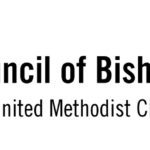We talk about “contemporary worship” but in many churches there is confusion about what that actually is. For some, it means the use of contemporary music, meaning the organ is out and keyboards and guitars are in. “Praise songs” are sung instead of hymns. Some say it means using modern technology such as PowerPoint presentations and videos. Hardcover Bibles and hymnals are replaced by the video screen and smartphones. Often people say it means that “old terminology” cannot be used. Worship centers replace sanctuaries and stages are used instead of chancels. We have opening prayers rather than invocations and talks rather than sermons. For others, it means avoiding anything that is done in “traditional worship” including confessions of faith and passing the peace of Christ—though an offering is usually taken. I’ve heard contemporary worship allows worship leaders to “do their own thing,” with no guidelines or standards.
Defining “contemporary worship” varies from one church to another and may even vary from one church member to another. It is not difficult to imagine one church member saying, “I just love our contemporary service,” and another church member responding, “You call that contemporary worship?” Perhaps we can get a handle on the meaning of “contemporary worship” by looking at the two words we are using. Contemporary: “Existing, occurring, or living at the same time: belonging to the same period of time” Random House College Dictionary, 1997, p. 285. It means worship that is appropriate and meaningful for people who are living now, rather than people who lived 100 years ago or who will live 100 years in the future. That means that every generation in every culture faces the question of “contemporary worship.”
What are the needs of 21st-century Americans, and which can be addressed through worship? Do we need to get our priorities in order? Do we need moral guidance? Do we need to deal with guilt and grief? Do we need to hear that God loves us? Do we need support during chaotic times?
Do we need to know how Jesus can make a difference in our lives? Do we need to be called to love their neighbor?
Do we need to be challenged to live for the benefit of others?
If we do, these needs should be addressed by “contemporary worship” even though they have been around for a long time. Once we have identified contemporary needs that can be addressed through worship, we must decide how to address them. That is where music, videos, drama, dance, movement, and all the other media come into play. These are the messengers which carry the message.
Should we use the same messenger for every act of worship? Which media are we capable of using effectively? Are we using a messenger because it is effective or because it is “contemporary?” Does a “traditional” messenger ever do a better job than a “contemporary” messenger? What physical needs of parishioners need to be considered? How dependent do we want to be on technology? What is the result if we do technology poorly? These and other questions need to be discussed seriously as we try to determine what we mean by “contemporary worship.”
But “contemporary worship” must not only be contemporary, it also must be worship. The Danish theologian, Soren Kierkegaard, compared worship with going to the theater. He said that for many Christians, going to worship was like going to see a play. They decided which show to see, dressed properly, arrived on time, were ushered to their seat, and waited for the show to begin. They were part of the audience that watched the performers: clergy, acolytes, musicians, and ushers put on the play. At some time, they could expect to pay for admission—usually during intermission. After the play, they had dinner, went home, evaluated the performance, and decided whether to return to that theater or look for another.
Then he asked, “Where is God in all of this?” The performers can put on a good show without God. Often, God is not the focus of attention. Sometimes, God is not even mentioned. Maybe God is standing in the wings—out of sight and out of mind. But God is not important. “The play’s the thing.”
“How different that is from New Testament worship,” he said. In New Testament worship, the people in the congregation are the actors who have come to do something—to worship. God is the audience—the one who watches and listens. So, what about the pastor and other worship leaders? They are the “prompters” who help the congregation do its worship.
Kierkegaard certainly knew something about New Testament worship, because the four New Testament words translated into English as “worship” are verbs—action words. Worship is not something that we attend and watch, it is something that we do.
Sebomai means “to lift up high.” It is often translated as “praise,” because to praise someone means to lift them up as very important and to give them honor above that which is the ordinary. That’s what we do when we praise God, isn’t it—lift up God as important and above the ordinary?
Our word “worship” comes from the Anglo-Saxon word “woerthan” which means “to declare worth.” Eventually, it was spelled “worth-ship,” but since “worth-ship” was hard to say, the “th” and hyphen were removed and the result was “worship.” But the meaning remained. To worship God is to declare how much God is worth.
Worship is a way of saying, “God is #1.” Nothing and no one is more important than God. That is why some Christians spent decades, even centuries, building magnificent churches. That is why my parents taught me to wear my “Sunday best” clothes to church. That is why “traditionally” we stand for acts of praise.
Worship is a time to get our priorities straight—at least for a little while. All week, we have lived as if we were #1. Now we acknowledge God is #1, and everything else comes “after” God—including us. God is not here to serve us, we are here to serve God.
Proskuneo means “to bow down.” Literally, it means “to kiss forward.” It was used to describe the act of a subject coming into the presence of the king, bowing down with hands and knees and forehead on the ground and kissing the king’s feet. Bowing down follows naturally from lifting up. Whatever we lift up as #1 is what we bow down to. It is what shapes and controls our life. For some that is money, power, success or pleasure. For Christians it is the God who is our Creator and Redeemer.
After we recognize that God is #1, we bow down to confess our sin, ask for mercy, and receive another chance. We also listen to what the King has to say, and we find out what the King has for us to do.
Latreuo means “to serve.” Serving follows naturally from “lifting up” and “bowing down.” If our King has work for us to do, then we had better do it. So, we offer ourselves in humble and obedient service and take our worship out the door with us as we carry God’s love into a hurting world.
Leitourgeo means “to fulfill an office.” This is why we refer to a “service of worship.” The noun form, “leitourgia,” gives us our word “liturgy” which, literally, means “the work of the people.” Liturgy is what people do together “to fulfill their office”—to worship God. Again we are reminded that worship is not something we attend, but something we do.
United Methodists believe that the scriptures are the primary source of our faith. Therefore, whether we call our worship “traditional” or “contemporary,” “formal” or “informal,” these New Testament words can help us evaluate what we are doing.
What is the difference between a worship service and a show? What is the difference between a worship leader and a performer? What is the difference between a congregation and an audience? Is our service “the work of the people” or is it a show people come to watch? Does the congregation do as much as possible, or do they “watch” a lot? Are the pastor, liturgist, acolyte, and musicians worship leaders or performers? Do worship leaders draw unneeded attention to themselves? Would applause feel appropriate after an act of worship or would silence or “amen” be more appropriate? Does every act of worship say (in one way or another) that God is number one? In our music, which is more important, the message or the music? Do “praise songs” lift up God as number one, or just make us feel good? Is the theology of our music consistent with the gospel? Do bodily postures help communicate what we are doing in worship? Are the physical needs of the congregation considered important? Does the worship service flow easily from one act of worship to another? Are people ready to serve God for another week when they leave the service?
All worship services do not need to be the same. They do not need to use the same acts of worship, the same musical instruments, or the same technology. But if we are to have “contemporary worship,” it should address the needs of people living now, and it should meet the standards of New Testament worship.
To find a detailed guide on starting a contemporary worship service visit:
www.gbod.org/lead-your-church/contemporary/resource/how-to-start-contemporary-worshipTo find contemporary worship resources visit: www.gbod.org/lead-your-church/contemporary





